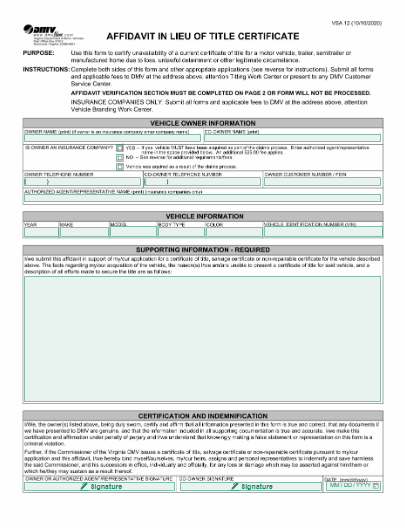Affidavit of Correction Title Virginia
An Affidavit of Correction Title in Virginia is a crucial document used to correct errors on a vehicle title or registration. It serves as a legal affidavit to rectify inaccuracies and includes important details about the correction process. To access our guide on completing a comprehensive Affidavit of Correction Title Virginia, click the button below. This template is essential for ensuring accurate vehicle records and compliance with Virginia state regulations.
Save time, avoid headaches, and ensure compliance effortlessly with current version of Affidavit of Correction Title Virginia. With our streamlined process, you'll have your form in hand within moments, giving you the peace of mind to focus on what truly matters – your business.

Understanding the Template
How to Use the Template
- Owner Information: Clearly state the full name, address, and contact information of the vehicle owner(s).
- Vehicle Details: Provide detailed information about the vehicle, including make, model, year, vehicle identification number (VIN), and specific details regarding the correction needed.
- Correction Details: Specify the nature of the error(s) and provide accurate information to rectify the title or registration.
- Signatures and Date: Provide space for the owner(s) to sign and date the affidavit, indicating their agreement to the correction and affirming that the information provided is true and accurate.
Frequently Asked Questions
An Affidavit of Correction Title in Virginia is a legal document used to correct errors on a vehicle title or registration. It outlines the correction process and serves as proof of the corrected information.
Anyone correcting errors on a vehicle title or registration in Virginia should use an Affidavit of Correction Title Virginia template. This includes private individuals, businesses, and other entities involved in vehicle ownership and registration within the state.
You can download the Affidavit of Correction Title Virginia template for free from reputable sources like our website BlueNotary or from the Virginia Department of Motor Vehicles.


